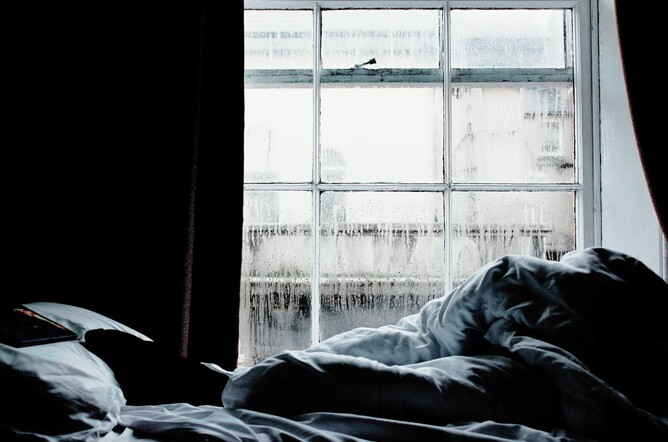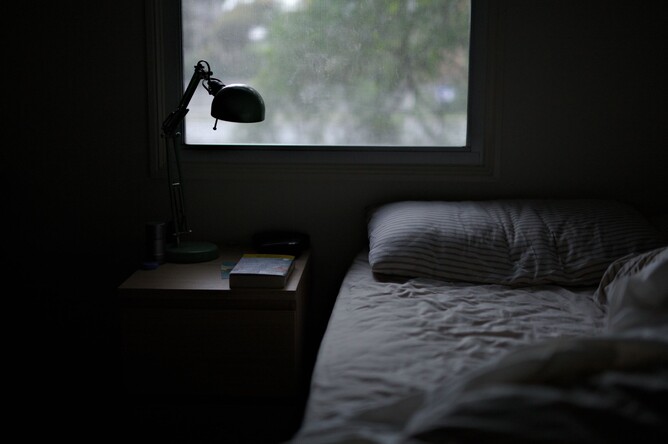New Zealand Homes are prone to many forms of Thermal Discomfort. Here are six issues nearly every New Zealander will have experienced thanks to problematic design, and six issues you won’t find with a Team Green Architects Passive House design:
1. Stratification
This is where a room is heated, but all the hot air is rising, so that when you sit or lie down you are in much colder air. This can have a significant detrimental affect on homes where the living spaces are on top and the bedrooms below. This will leave you feeling like you are descending into a cold damp basement every time you go to bed.
2. Temperature Asymmetry
This is another common “feature” of New Zealand homes, where an internal environment is heated, but because the walls are not properly insulated, OR low thermal quality aluminium windows are used, the closer you get to an outside wall/window the colder you feel. This is because the surface temperature of this wall is much lower than the internal temperature of the room, and your body begins to radiate its heat out towards the cold surface – making you feel cold.
3. Drafts
Drafts are caused by gaps in the external fabric of the building. Common NZ construction allows for gaps around windows, which is a usual place for drafts if not properly sealed. The construction framing & insulation stops short of the window to allow the window to be inserted, leaving a packing gap. The building code allows for an air seal, although this is often compromised over time, or non-existent in older buildings, meaning there is simply a gap here for cold air to come in. Other holes in the building fabric are due to vents, flues or electricians cutting through insulation for lights or power points. These all cause drafts compromising internal Thermal Comfort.Another type of draft is the DOWNDRAFT.As explained under "Stratification" - warm air rises. When this air cools, it starts to drop, and if this air passes a cold surface such as a window it will accelerate and a downdraft will be caused.
4. Windows
Windows allow for views and sunlight to enter the building, but if not properly designed, and detailed they can be a common area of discomfort in the home. There are two main causes.
No. 1: The description of "Temperature Asymmetry" (above) is particularly relevant in relation to windows. The close you get to a window the more long-wave radiation is transferred between your body and the window, making you feel cold.
No. 2: Overheating: Too much glass without appropriate shading elements will mean that at certain times of day throughout the year you will find there is too much sun and heat coming through a window. This can either make it difficult to work due to too much glare, or overheat the room so much that it is impossible to stay in.
5. Humidity - Damp & Mould
Condensation, damp and mould will form on the fabric of the building when the temperature of the fabric reaches the dew point. The Wikipedia definition of the dew point is “the temperature at which the water vapor in air at constant barometric pressure condenses into liquid water at the same rate at which it evaporates. At temperatures below the dew point, water will leave the air. The condensed water is called dew when it forms on a solid surface.”
This is commonly seen on windows where condensation forms around the edge of the glass. This condensation is forming at the coldest point. This cold point is either cause by an aluminium frame acting as cold bridge (see below for definition of cold bridge), or the metal edge spacer separating the panes of glass. Both are transferring the external cold temperatures to the inside surface of the material, bringing the surface temperature down to dew point (or below). If the internal relative humidity is 80% the dew point occurs at a surface temperature of 12.6°C.
Seeing condensation on the windows is common, but this is also occurring wherever the surface temperature has reached dew point. This can be behind wardrobes, at the corners of the building, and within the building fabric (completely hidden from our eyes).
This moisture can lead to damage of the building fabric. The effectiveness of fibreglass insulation is greatly reduced with moisture damage. In addition, damp that is not regularly cleared away will turn into mould.
Mould growth is bad for your respiratory system and your health.
6. Thermal (Cold) Bridges
Thermal bridges are zones in the building fabric where materials that are poor thermal insulators (or high conductors of heat) come into contact with each other and create a bridge from the outside to the inside. This creates a transfer of heat through the path of least thermal resistance. This is most commonly seen in NZ construction on Aluminium windows (as shown above under "Windows").
Metal is a good conductor of heat, as you will see in an oven tray or saucepan. The metal heats up very quickly when in contact with heat, but will also cool down very quickly when it is in contact with cold. This is why steel construction in the thermal envelope can pose a risk to the thermal integrity unless it is properly addressed, and insulated. It is also a place that needs to be carefully analysed to assess the dew point, as this is where condensation can form and be hidden in the building fabric.
A common thermal bridge in NZ construction is the slab edge detail. Often now Architects and Designers are trying to make this situation better by using a timber insert to reduce this problem, however the problem has not gone away. The corner of this foundation will still transfer the cold to the inside surface acting as a cold bridge and in all likelihood be a place where damp and mould could form.
A Passive House has a requirement that any thermal bridge should have a thermal conductivity less than 0.01 W/mK.
One way to review potential thermal bridges is by a software program called Therm that produces a thermal image detail of the construction, and allows you to review the internal temperature that has been created at varying external temperatures.
A Therm diagram through a typical NZ construction detail through the corner of an insulated 90mm timber framed wall shows a temperature drop at this corner well below 12°C. This poses a significant risk of mould growth. In a Passive House the internal surface temperature should not be more than 3°C below the internal room temperature of 20°C.
Want to create something better?
Contact us here and let's get started.



